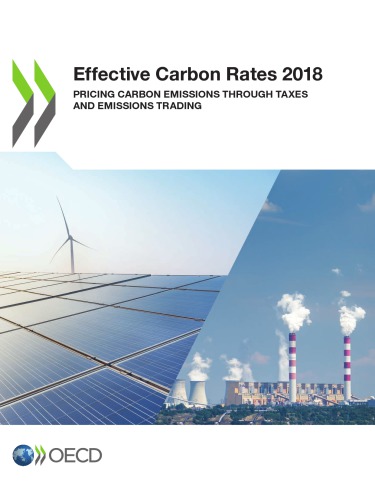دانلود کتاب Effective carbon rates 2018 : pricing carbon emissions through taxes and emissions trading - Original PDF
Author:
coll
0 (0)
توضیحات کتاب :
Pricing carbon emissions allows countries to smoothly steer their economies towards and along a carbon-neutral growth path. By putting a price on carbon emissions, countries can increase resource efficiency, boost investment in clean energy, develop and sell low- emission goods and services, and increase resilience to risks inherent in deep structural change. Failing to price carbon emissions now, increases the risk that the planet overheats, with average temperatures increasing by five or more degrees. Adaptation to such increases might be possible, but would likely be extremely costly. Decisive action to reduce the risk is by far the better option. Pricing carbon emissions is important for moving to carbon-neutral growth. This second edition of Effective Carbon Rates shows how 42 OECD and G20 countries, representing 80% of world emissions, price carbon emissions from energy use today, and how much progress has been made since 2012. Carbon prices are measured using the effective carbon rate (ECR). The ECR is the sum of three components: specific taxes on fossil fuels, carbon taxes and prices of tradable emission permits. All three components increase the price of high-carbon relative to low- and zero-carbon fuels, encouraging energy users to go for low- or zero-carbon options. In each of the 42 countries, the ECRs are measured for six economic sectors: industry, electricity generation, residential and commercial energy use, road transport, off-road transport, and agriculture and fisheries. The report discusses the change of ECRs by comparing pricing patterns in 2012, 2015 and estimates for 2018. The carbon pricing gap measures the difference between actual ECRs and benchmark rates. The report considers two benchmark rates: EUR 30, a low-end estimate of carbon costs today; and EUR 60, a midpoint estimate of the carbon costs in 2020 and a low-end estimate for 2030. The carbon pricing gap indicates the extent to which polluters do not pay for the damage from carbon emissions.
سرچ در وردکت | سرچ در گودریدز | سرچ در اب بوکز | سرچ در آمازون | سرچ در گوگل بوک
1,046 بازدید 0 خرید










